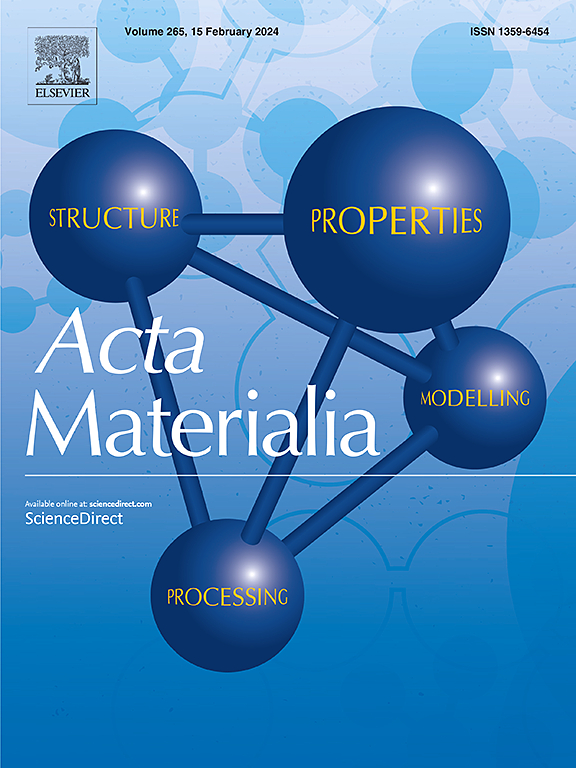Crystal plasticity parameter identification via statistical relevant micropillar compression
IF 9.3
1区 材料科学
Q1 MATERIALS SCIENCE, MULTIDISCIPLINARY
引用次数: 0
Abstract
In order to predict ductile damage initiation at the microstructure level, especially for multi-phase materials, it is essential to have high-fidelity crystal plasticity parameters. They need to accurately represent the evolving phase contrast, which implies that the initial phase contrast and the individual strain hardening of the phases has to be mapped precisely. This paper presents a methodology for calibrating the parameters of a phenomenological crystal plasticity model for a DP800 steel based on the critical resolved shear stress from in situ micropillar compression tests taken out of macroscopic tensile tests at various prestrain levels. Furthermore, the influence of mechanical size effects was incorporated through the inclusion of statistical relevant micropillar compression tests of varying prestrains and dimensions. The data were used to calibrate a model, which successfully predicted the homogenized macroscopic stress–strain curve from uniaxial tensile tests with a mean absolute error of only and a mean absolute percentage error of 3.3%. Furthermore, it was shown that the influence of the strain hardening of the martensite can be neglected under certain conditions, especially when predicting the homogenized stress response for low strains. This result demonstrates the importance of high-fidelity parameter calibration for damage prediction, when compared to a synthetic parameter set, which leads to a different stress and strain partitioning for the same homogenized stress–strain curve.

基于统计相关微柱压缩的晶体塑性参数识别
为了在微观结构水平上预测塑性损伤的发生,特别是对于多相材料,必须有高保真的晶体塑性参数。它们需要准确地表示不断变化的相对比,这意味着初始相对比和各个相的应变硬化必须精确地映射。本文提出了一种校正DP800钢现象学晶体塑性模型参数的方法,该模型基于不同预应变水平下宏观拉伸试验中原位微柱压缩试验的临界分解剪应力。此外,通过纳入不同预应变和尺寸的统计相关微柱压缩试验,纳入了机械尺寸效应的影响。利用数据对模型进行校正,成功预测了单轴拉伸试验的均匀宏观应力应变曲线,平均绝对误差仅为20.7±7.7MPa,平均绝对百分比误差为3.3%。结果表明,在一定条件下,马氏体应变硬化的影响可以忽略不计,特别是在预测低应变的均匀应力响应时。这一结果表明,与合成参数集相比,高保真参数校准对于损伤预测的重要性,这导致同一均质应力-应变曲线的应力和应变分配不同。
本文章由计算机程序翻译,如有差异,请以英文原文为准。
求助全文
约1分钟内获得全文
求助全文
来源期刊

Acta Materialia
工程技术-材料科学:综合
CiteScore
16.10
自引率
8.50%
发文量
801
审稿时长
53 days
期刊介绍:
Acta Materialia serves as a platform for publishing full-length, original papers and commissioned overviews that contribute to a profound understanding of the correlation between the processing, structure, and properties of inorganic materials. The journal seeks papers with high impact potential or those that significantly propel the field forward. The scope includes the atomic and molecular arrangements, chemical and electronic structures, and microstructure of materials, focusing on their mechanical or functional behavior across all length scales, including nanostructures.
 求助内容:
求助内容: 应助结果提醒方式:
应助结果提醒方式:


